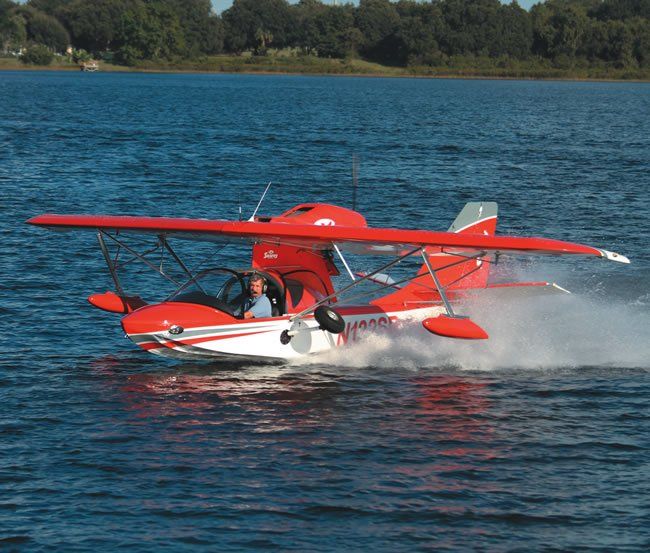Its probably a journalistic pretense to imply that there’s anything practical about light sport airplanes. Few of them are used for travel and even fewer are flown in the kind of weather that a utilitarian airplane like a Bonanza or Cirrus has to tackle to earn its keep. So in reviewing LSAs, were talking about big, expensive toys and that certainly applies to the Searey Elite.
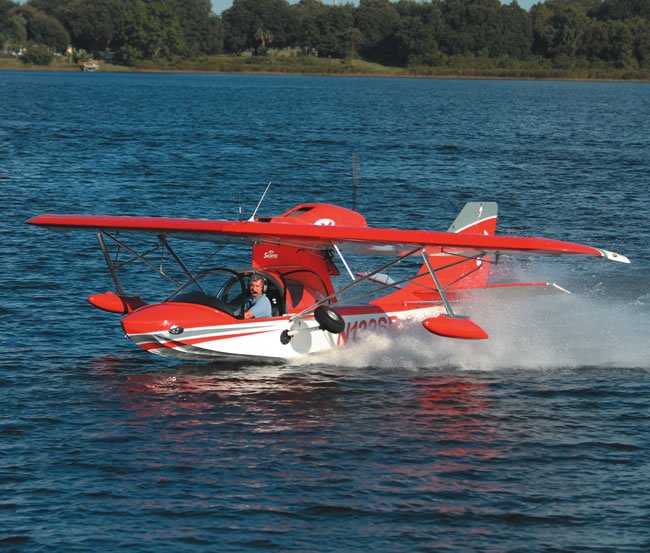
If ever there were a pure sport airplane, the Searey amphibian ought to qualify. Its slow, doesnt carry much, isn’t exceptionally comfortable and wont fly far. But it offsets all that with hell-for-leather fun that buyers looking for something different might find appealing.
The Searey began life as an amphibian kit aircraft, evolved to an ELSA and is now selling as a full-up SLSA as the Searey Elite, an upscale, glass cockpit version of what was once a bone-basic airplane.
At a $158,000 base price, the Seareys sticker is about $25,000 higher than a typical land light sport, but less than the soon-to-be Icon A5 ($189,000) and way less than the $370,000 Lisa AKOYA. Since we last examined the Searey in 2009, the company has received an infusion of investment, built a new factory and evolved a new model, the Elite.
Long History
As LSA companies go, Progressive Aerodyne has been around a while, having been formed by Kerry Richter and partners in 1992. Its experimental kits soon became dominant in the amphibian field simply because there werent that many EAB flying boats. The companys Kevin Oaks told us Progressive Aerodyne has about 600 aircraft flying, most of them kits. But when we visited the company in November 2014, some six LSA versions of the Elite were on the assembly line and more are on the order books. Progressive Aerodyne is looking east for more growth, having established a sales office in Shanghai, through the efforts of Adam Yang, a Searey owner who became the CEO in 2011.
The company offers three models: The basic Searey Sport LSA, the Searey LSX kit airplane and the Searey Elite. Oaks told us the Elite is the top seller, confirming whats proven true in the LSA market: Buyers want top of the line.
And for a modest flying boat, the Elite certainly is that. As an upgrade from the Sport, the Elite has a turbocharged Rotax 914 at 115 horsepower in place of the 100-HP 912 used in the Sport. The additional horsepower provides a performance punch mostly in takeoff and climb, but it also improves the airplanes high elevation performance. No surprise that owners take these things into mountain lakes for an afternoon of fishing. The 914 makes that doable and probably with some reserve performance margin.
The cockpit and panel are what we have come to expect of high-end LSAs, which is to say a lot of glass and comfortable leather seats. Except theyre not leather, but a marine-grade faux leather, since (a) theyre inevitably going to get soaked and (b) you have to put your likely wet feet on them when boarding. But the material is designed to absorb the punishment and in the demo we flew, the upholstery looked luxe enough to cause second thoughts about stepping on them. No worries, said demo pilot Daniel Nickens, so we planted both Nikes smack on the seat to ingress.
Construction
To understand the Seareys construction, think of a small open boat a little broader than a canoe, then close in the bow section with a cover. Then drop into the boat what sort of looks like a Hughes 300 helicopter, but with wings attached rather than rotors. Thats a stretch, but it gives the idea.

The hull of the Elite is of carbon fiber and weighs about 85 pounds. The Sports hull is fiberglass and is 25 pounds heavier. The Elite has a useful load of 445 pounds. The only through-hull fittings are for the landing gear and these are usually above the waterline.
The longitudinal structure of the airplane consists of a heavy-walled aluminum pipe-hence the Hughes reference-which runs from the back of the cabin to the rearmost end of the aircraft, where it provides structure for the retractable tailwheel and the empennage. The pipe terminates immediately behind the pilots seats and ties into a structure that supports the wings main spar.
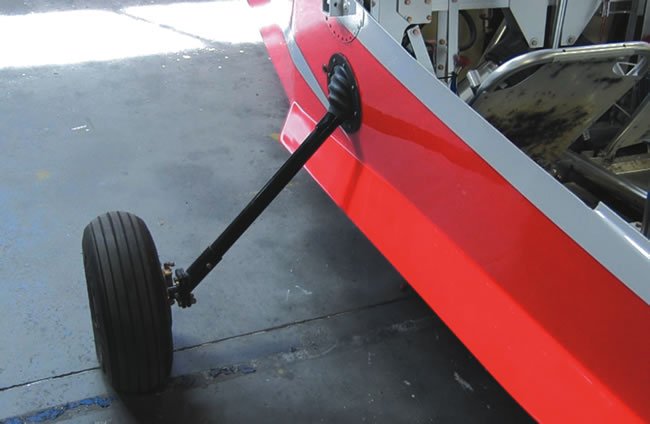
Consistent with its kit antecedents, Progressive Aerodyne makes generous use of aluminum tubing throughout the structure. Its mostly bolted together with few rivets and no weldments and its treated with linseed oil for corrosion resistance.
The channel aluminum wing rib trusses are riveted together and fastened to tubular aluminum spars. The gear legs? Steel tubes, with an aluminum fairing to give them more streamlining in both the water and the air.
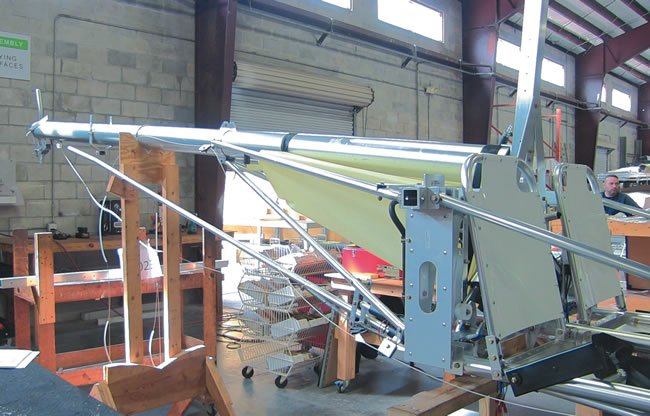
With respect to the landing gear, the FAA had to relent on amphibious LSAs, allowing retractable gear. Progressive does this by a motor for each gear leg. Through a jackscrew, the motor simply raises the gear up in plane, sort of like a half jumping jack. The gear stows against the wing struts, we’ll clear of the waterline. Through a cable arrangement, the left gear motor also raises the tailwheel, which is attached to the aforementioned tube, but is outside the watertight hull. To keep the hull interior dry, the hollow gear legs are plugged and the through-hull passage has a flexible boot. The wings have all-aluminum ribs and spars, with a metal leading edge and Polyfiber cover. There are no fuel tanks in the wings, however, so fuel is stored just behind the pilot seats in a heavy-walled, trapezoidal plastic tank with a 22-gallon usable capacity. Because the tank is below the engine, the fuel system is equipped with two electric pumps, which run continuously. The switches for them are placed prominently on the panel, along with the airplanes bilge pump switch.
Custom Glass
The Elites main panel display is an Advanced Flight Systems 5500 which is programmed to remind the pilot hes in an amphib. Audible warnings nag to remind the gear must be up for a water landing and these force an intentional acknowledgement that the gear is down for a planned land landing.
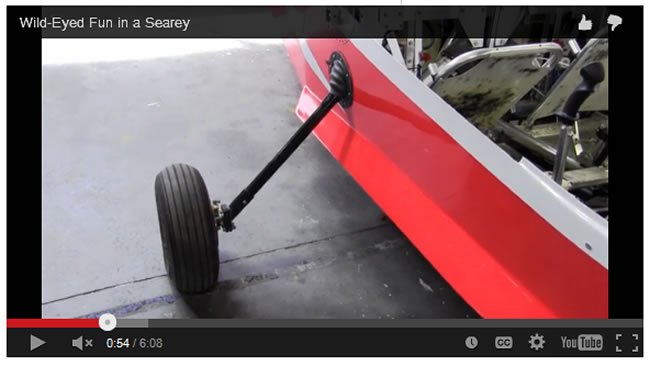
These warnings are so incessant, in fact, that its a minor annoyance. Better that, we suppose, than the indignity of turning turtle by landing in water with the gear down. At least four owners have done that and flipped. A fifth avoided that, but the hull was damaged enough to sink the airplane. When we flew with Daniel Nickens, he said pilots need to be obsessive about gear position and its hard to argue the point. The center portion of the panel is occupied by a Garmin aera 696 or 796 and below that is a Garmin GTR 200 comm and a GTX 327 transponder.
The gear switch, with two prominent green down lights, the flap control, brakes and throttle are on the lower portion of the console between the two seats. The brakes are hand operated and control both wheels together, which takes some getting used to. The center sticks poke up from an indent in the lip of the seat and the stick itself has a PTT and a coolie hat trim button.
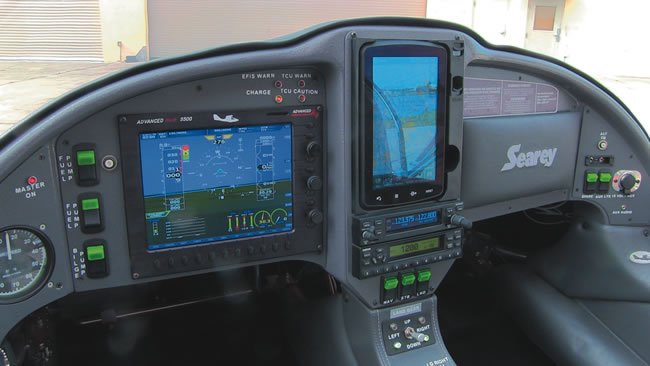
Creature comforts are adequate, but not luxurious. The airplane has a pair of sliding canopies, one for each side, and these don’t latch but merely slide forward.
Progressive makes the point that this design is a surer bet for egress in the event of a nose over than a conventional canopy would be and we agree. As noted above, a flip over
in an amphibian is far from a remote possibility, which is also the reason standard procedure includes donning personal flotation devices. A paddle is helpful too, to maneuver near docks, obstructions or in shallow water.
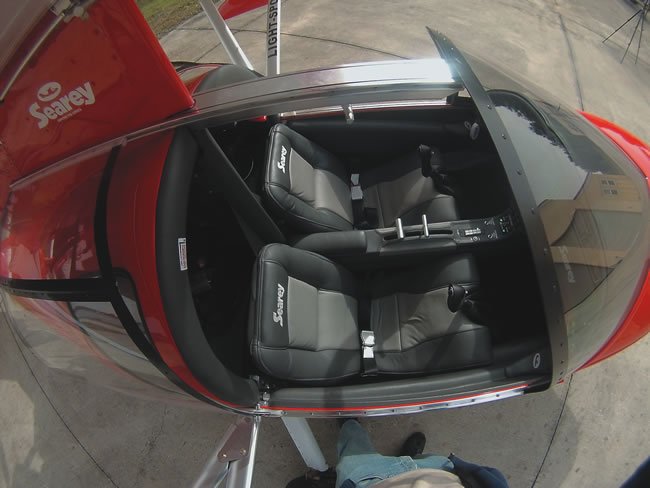
Floating It
Taxiing a flying boat down a ramp and into the water requires a certain faith in the physics of buoyancy. The Searey sits low in the water, so much so that there’s only about a foot of freeboard to the cockpit combing. A bit of a list and a boat wake could ship water into the cabin. Closing the sliding canopy will prevent that.
For water taxiing, Nickens told me its common to leave the gear down so it acts as a sort of stabilizing keel, keeping the turns from becoming skid fests. With the pusher engine blasting air over the large rudder, the Searey can turn aggressively on the water and will go where you aim it. Just for fun, it can also do high-speed Jet Ski- style fast-taxi turns at 30 to 40 MPH. Sitting so low in the water, the speed in these turns seems much higher than it is and to keep the wing floats from digging in, you use opposite aileron against the turn. But if one does catch, the floats are protected by a breakaway plastic fitting that allows them to swing free, avoiding wing damage. The part is easily replaceable.
Water takeoffs require raising the gear after checking that the bilge is dry. Full back stick gets the hull on the step quickly and then you can all but release the back pressure, nudging the airplane off the water when its ready. Although the Searey Elite isn’t a fast airplane-figure cruise speed around 95 MPH-it does climb we’ll and holds at least 800 to 900 FPM to medium altitudes, thanks to the 914s turbocharging.
The Elite has typical control forces-not as light as the Sport Cruiser or Remos, but lighter than the Groppo Trail we recently flew. Like other amphibs with high-mounted pusher engines, changing power yields a big pitch moment; down when power is added, up when its reduced. But once that transitional thrust vector is gone, so is the pitch moment. It returns to the trimmed airspeed. We noticed that the Searey doesnt have a lot of up pitch authority, so it takes exertion to get it to stall. That nets a little bobble and a stable parachute mode if the pitch isn’t relaxed.
Water landings require more of that taxi-down-the-ramp faith we mentioned. Because the airplane is so low in the water, the flare-what little is required-happens about two feet lower than you might expect. The airplane touches down almost flat and settles into the water off the step when the power is reduced. Or it can be speed taxied on the step. To shorten the roll out, yawing from side to side ramps up the drag, as does lowering the landing gear.
Although the Searey is a taildragger, the tail angle is so low that it doesnt really land like one on a hard runway. Visibility over the nose is good, so the landing sight picture is about the same as youd expect in a nosegear airplane landing on the mains. Ground handling takes a touch. With just a single hand lever for both brakes, steering is via rudder and it requires aggressive inputs and maybe a blast of power to get turning after the tailwheel breaks loose to swivel. Practicing helps.
Conclusion
The Searey Elite is a competent, fun flying machine and there’s no point in suggesting its anything other than that. If you have a lake house, you could commute with it or do light camping and fishing at a secluded mountain lake. But otherwise, were talking about as pure a recreational aircraft we can imagine.
Most of these airplanes-predominantly kits-live in hangars and are flown on water for sport. Although Progressive Aerodyne offers a wing-fold option, its not meant to be a quick fold to trailer the airplane back and forth to the lake as Icon intends for the A5. The market for such a thing remains unproven. But the Seareys credible aircraft population certainly proves the appeal of the concept for those who can afford it.

